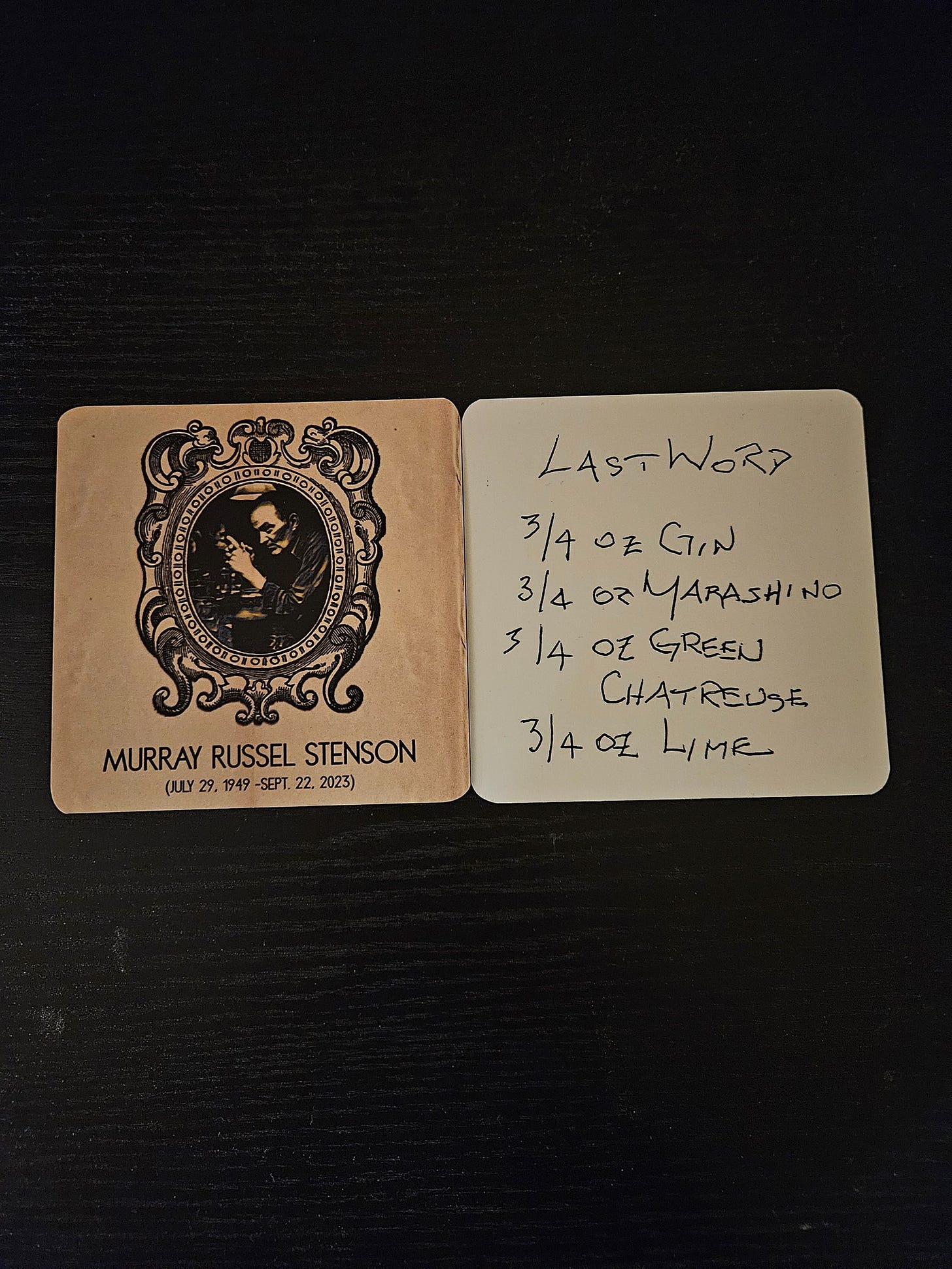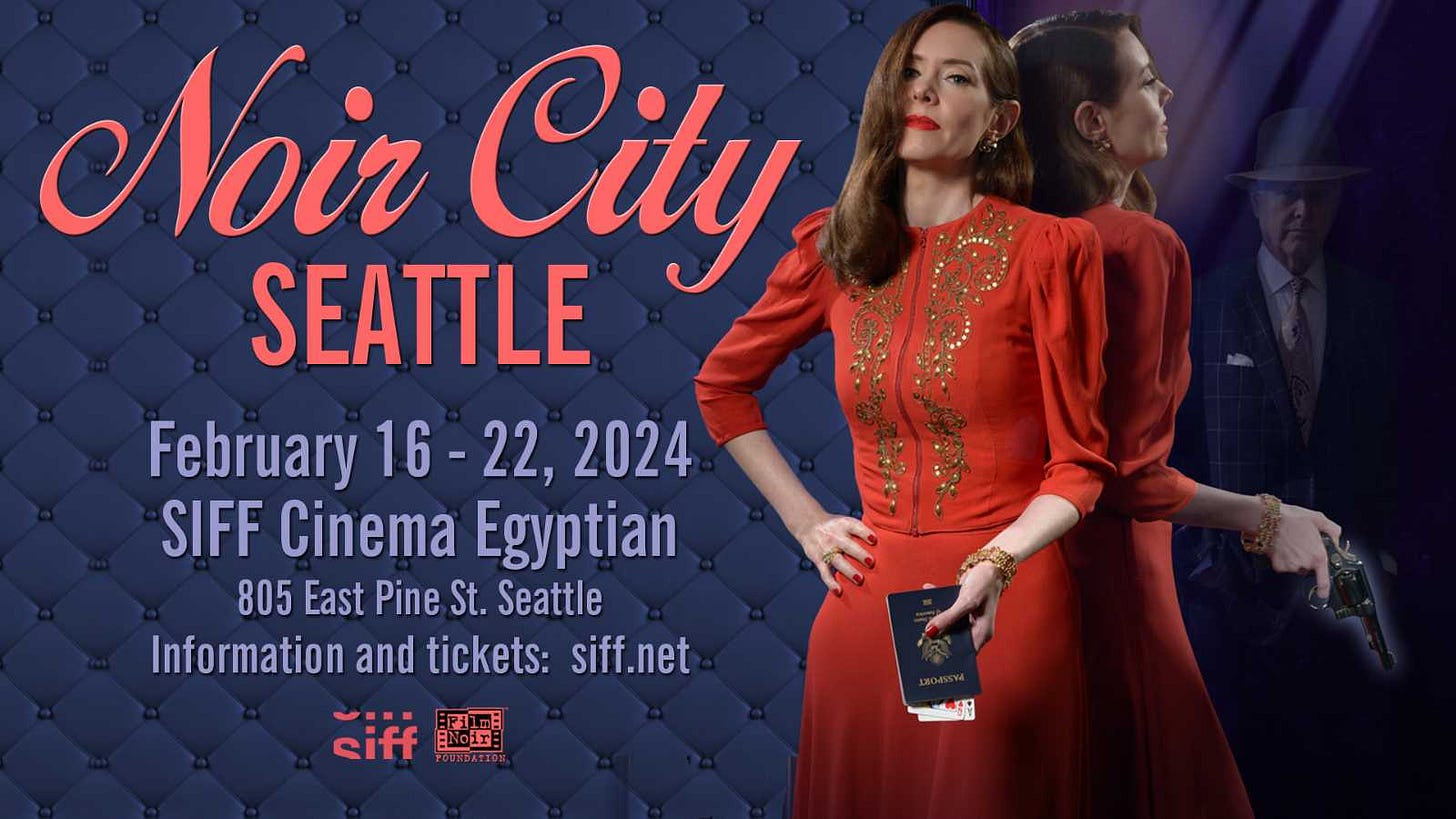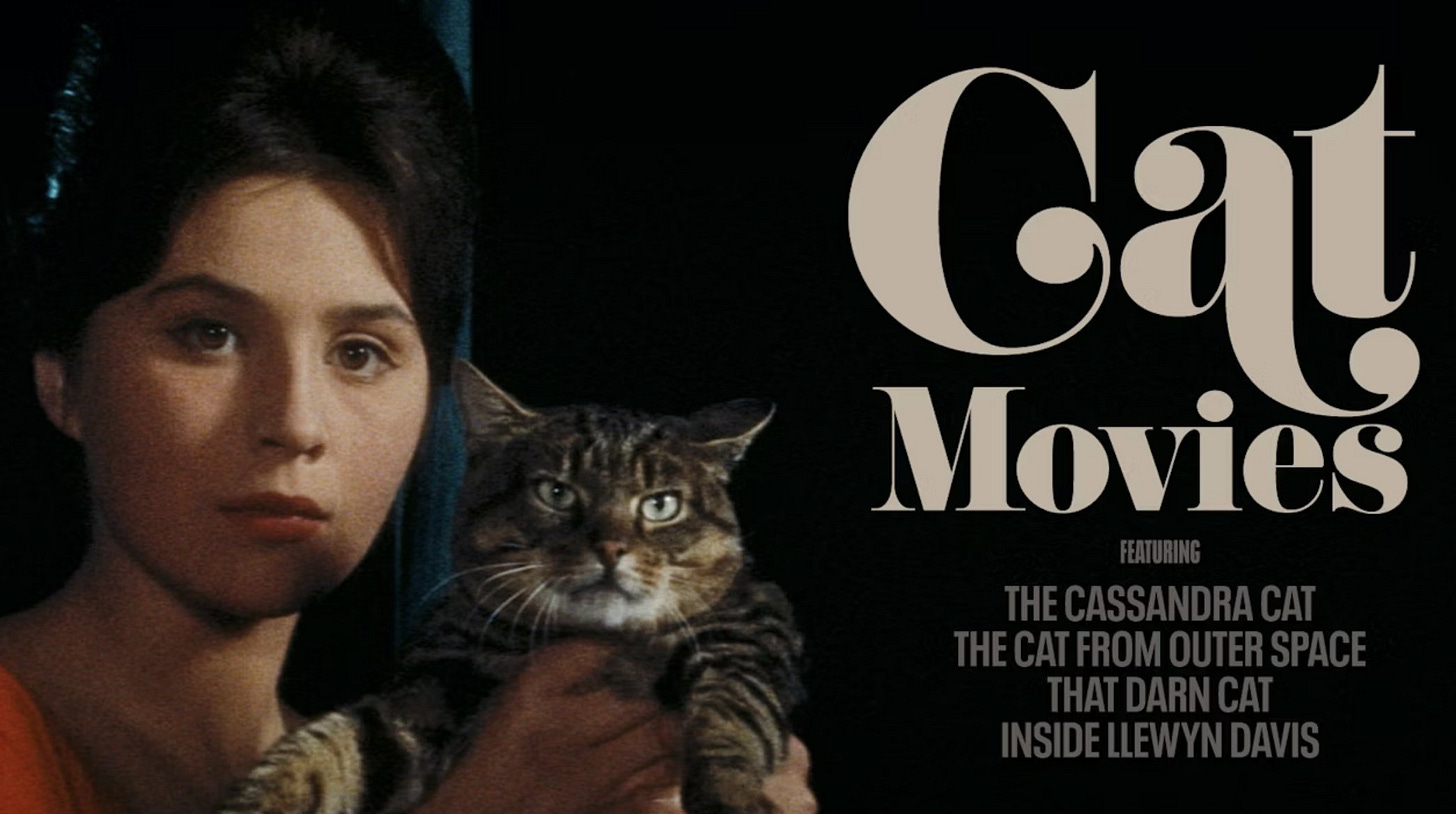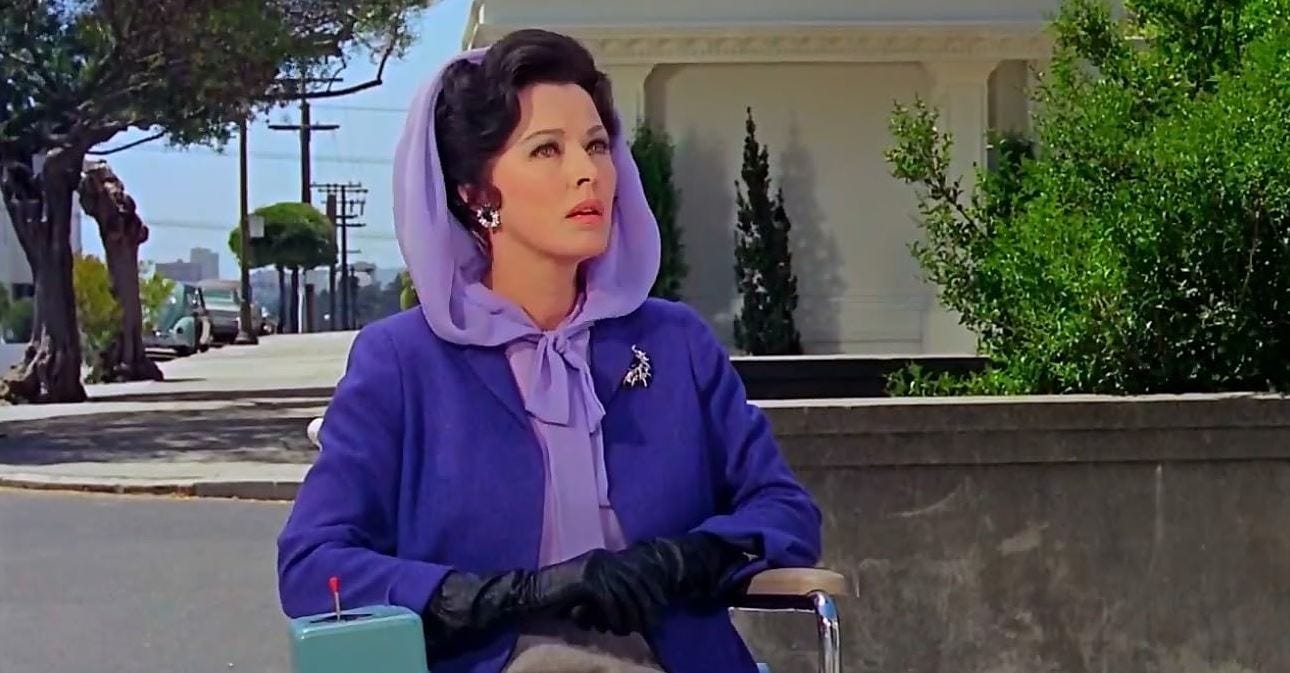In the weeks leading up to the memorial for legendary bartender Murray Stenson, held on Monday, January 29, I had the same conversation more than once.
A ticketed event? With sponsors? At the Chihuly Museum? Murray would have HATED that. The way to honor Murray would be to drink Heinekens at some dive bar in the International District.
All of these conversations ended the same way.
Are you going?
Of course. It’s for Murray.
I went into the event still harboring skepticism, but it began to dispel when one of the organizers—I believe it was Robert Hess of DrinkBoy fame—made a request. He asked everyone present to turn to their right or left and introduce themselves to a person they didn’t know. Which is how I wound up chatting with Karen, who worked as a hostess at Il Bistro in Pike Place Market during Murray’s initial stint tending bar there over twenty years ago.
It was a simple way of honoring Murray’s greatest accomplishment, bringing strangers together. I once asked Murray how he kept things lively at a bar, and he surprised me by saying that he actively encouraged people to discuss those taboo subjects you’re usually counseled to avoid. Money. Religion. Sex. Politics. He believed that the barroom is one of the last bastions of adult conversation, and with the consumption of alcohol likely lowering inhibitions, people might be more inclined to say something real. I asked if the talk could get out of hand for the same reason. Sure, there’s always a chance of volatility, he said, but ideally the room would take care of itself. To him, a successful bar was a living organism, modulated by the regulars. “The customers will respect the atmosphere,” he said. “The regulars will strive to protect it.” Murray’s approach is a reminder that human connection and common ground, nowadays so hard to come by, can still be found, but doing so demands both effort and trust.

It was an honor to be in the company of hundreds of hospitality industry veterans paying their respects to one of their own, who had served as a mentor and role model to so many. Colleagues and customers alike had stories about Murray’s lifetime of small kindnesses, behind the bar and otherwise, that made the world a brighter and more welcoming place and the man himself a figure who will be dearly missed.
They served Murray’s cocktails, so naturally many a Last Word, which he saved from oblivion, was poured. Green chartreuse is key to the drink’s magic, and the Carthusian monks who make it announced that they would not increase production to match rising demand, much of it driven by the Last Word’s popularity. The day after the memorial, I stopped by the liquor store. For the first time in almost two years, they had a bottle—a single bottle—on the shelf.
I didn’t hesitate. I bought it. I know a sign when I see one.
Where I’ll Be
My favorite week of the year returns. The Film Noir Foundation and SIFF Cinema are bringing the Noir City film festival back to Seattle from February 16—22, with TCM’s own Eddie Muller as master of ceremonies. At least for the opening weekend. After that, I’ll take over those duties, introducing a double feature every evening. (Rosemarie is listed in the promotional material as cohost, but I regret to inform all paying attendees that, due to the demands of her day job, I will be working solo those nights.)
This year’s theme, Darkness Has No Borders, celebrates film noir as a global movement. Every twin bill pairs a classic noir with a similar film from another country. It’s the international fare that you don’t want to miss. Rosemarie and I will be front and center on opening night for the screening of the FNF’s latest restoration, the Argentine Cornell Woolrich adaptation Never Open That Door (1952). We wouldn’t miss Cairo Station (1958) from Egypt. And I can attest that being in a full house for the jaw-dropping insanity that is Victims of Sin (Mexico, 1951), starring the incandescent Ninón Sevilla, was one of the great moviegoing experiences of my life—and at the Egyptian you’ll get to experience it in a new 4K digital restoration. Here’s the lineup I’ll be introducing, every one of them worth seeing on the big screen.
Monday, February 19 – Plunder Road (1957) / Symphony for a Massacre (France, 1963)
Tuesday, February 20 – Black Tuesday (1954) / Le Trou, aka The Hole (France, 1960)
Wednesday, February 21 – The Asphalt Jungle (1950) / Four Ways Out (Italy, 1951)
Thursday, February 22 – La Bête Humaine (France, 1938) / Human Desire (1954)
What I’m Watching
Who knew I’d spend so much of January with the Criterion Channel’s Cat Movies series? Then again, who expected it to contain so many murderous cats? Here’s a rundown of felonious felines that were new to me.
The least of the litter is The Cat Creeps (1946), made late in Universal’s classic horror cycle. Ho-hum hokum involving a cat that may be possessed by the spirit of a dead woman. “Star” Fred Brady is what you’d get if you combined the three farmhands from The Wizard of Oz in a revolutionary process that drained them of all charisma. But hey, it’s not even an hour long.
Way more fun is Eye of the Cat (1969), set in swinging-sixties San Francisco. It’s billed as horror, likely because it was written by Joseph Stefano (Psycho, The Outer Limits), but this is a straight-up crime movie. Avaricious hairdresser Gayle Hunnicutt tracks down the favorite nephew (Michael Sarrazin) of an aging client (Eleanor Parker) so he can worm his way into the will before the old lady dies. Otherwise, the estate goes to Parker’s hundred or so unruly cats. Problem: Sarrazin is deathly afraid of kitties. His brother is played by Tim Henry, who looks enough like Eli Manning to be distracting. The movie features kinks aplenty; Hunnicutt’s ice queen thaws spectacularly, there’s sex in a creepy basement storage room, and Parker, whose character was the longtime mistress of the boys’ dead father, clearly has the inappropriate hots for Sarrazin. Edith Head designed the costumes—insert mandatory Renee Patrick plug here—which means Parker dons a lavish lavender dressing gown with huge fur cuffs for lying in her oxygen tent.
The surprise was The Shadow of the Cat (1961), from Britain’s Hammer Films. When the titular tabby is the sole witness to the murder of its sweet old lady owner, it seeks revenge. A Gothic send-up with a sly script by crime novelist George Baxt, who created Pharoah Love and wrote a string of celebrity-studded Hollywood mysteries. Worth watching for the cat’s-eye murder-cam shots alone.







Wish I could be there to see your intros. Because some of the foreign lineup was so obscure, I had to some deep searches to find and restore many of the posters and stills for this year's souvenir program. Enjoy!
I still haven't had a Last Word because of the scarcity of green chartreuse! I've been watching Criterion as well. My favorite recently was The Cat (1991) a wild Japanese science fiction horror flick.